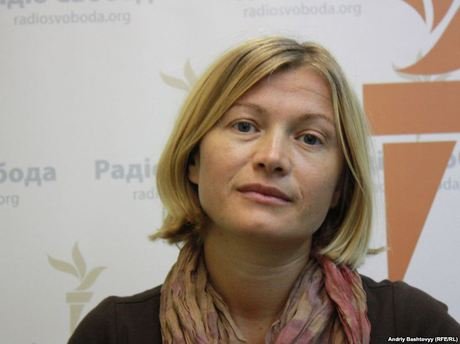There would have been fewer fights in the Ukrainian parliament if more women were among the deputies. At least female parliamentarians were not seen taking part in the multiple brawls that marked the first working days of Ukraine’s newly elected legislature this week.
The political
culture in Ukraine is male-dominated and it may stay that way for a long time.
Only 44 members of parliament in the 450-seat Verkhovna Rada are women, still
under 10 percent. That’s eight more than in the previous parliament, but still
leaves Ukraine far from European standards of gender equality with the next
scheduled parliamentary election in 2017.
There is a
connection between women in power and the strength of a nation’s democracy.
Studies
have shown that women are more likely to rise to positions of power in open and
democratic political systems, and such societies are usually fairer and less
corrupt than countries led mainly by men. By contrast, the role of women is
often limited in authoritarian and less developed countries.
If true,
the fact that there are few women in power in Ukraine is a direct signal that
something is wrong here.

“It will be difficult to defend gender
equality in the new parliament,” said Iryna Herashchenko, a new elected
opposition member of parliament from Vitali Klitschko’s Ukrainian Democratic
Alliance for Reforms.
By contrast
to Ukraine’s 10 percent, women in Denmark make up 39 percent of parliament. In
Austria and Germany, the figures are 38 and 33 percent, respectively. Some
African countries such as Angola and Uganda have the same high level of
representation of female deputies in their parliament.
Political parties
in Ukraine did not make women a priority during the Oct. 28 parliamentary
election.
Research
commissioned by the National Democratic Institute, which is financed by the
American government, showed that only 9 percent of deputies brought to
parliament by the pro-presidential Party of Regions are women. United
Opposition-Batkivshchyna and Ukrainian Democratic Alliance for Reforms showed
higher figures, 12 and 18 percent, respectively. However, it was Communist
Party of Ukraine which outperformed its rivals in terms on gender policy. Women
comprise 19 percent of deputies who came to Verkhovna Rada under the label of the
KPU. In contrast to them, the nationalist Svoboda Party brought no women
through the party list.
“There is no gender descrimination in our
party,” said Yuriy
Syrotiuk, a member of Svoboda’s political council. “There are two women from
Svoboda in the parliament who were elected in single-mandate constituencies. We
gave them 100 percent winning districts to ensure at least two women will be in
Svoboda’s faction.” Syrotiuk said.
With the exception
of Svoboda, other parties brought more women on their party lists than in
single-mandate constituencies. Twice as many women were elected through party
lists than in single- mandate race.
“Women
generally fare better in party list systems where there are often more
resources and incentives within parties to nominate and elect women,” read the
post-election report by National Democratic Institute. “By comparison with men,
women typically have less access to the resources required for building and
conducting campaigns.”
Women also
tend to occupy lower places on party lists than men.
In the
United States, women’s representation in Congress is not as high as in legislatures
of most European countries, but it is still much better than in Ukraine. Women
in the new U.S. Congress will make up 20 percent of the Senate and almost 18
percent of the House of Representatives. This is the largest number of women
historically, achieved after decades of struggle. Moreover, U.S. President
Barack Obama won reelection this year because he focused on female voters and
their needs.
“The candidate
who won the last presidential election in the U.S., won the war for women,”
said Olena Yena, head of the Women Lead Program at the National Democratic
Institute. “In Ukraine, the war for women is yet ahead.”
In contrast
with some European countries, Ukraine does not have quotas or a legislative
mechanism to guarantee increased women participation in the parliament.
Therefore parties should establish their own quotas for female candidates if
they want to move towards European standards of gender balance.
Kyiv Post staff writer Oksana Faryna can be
reached at [email protected].
